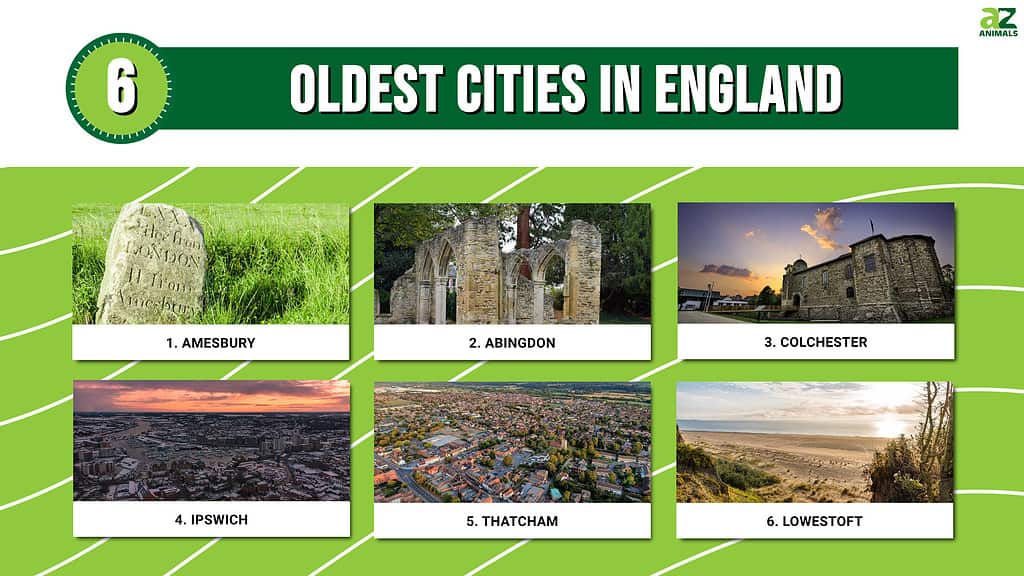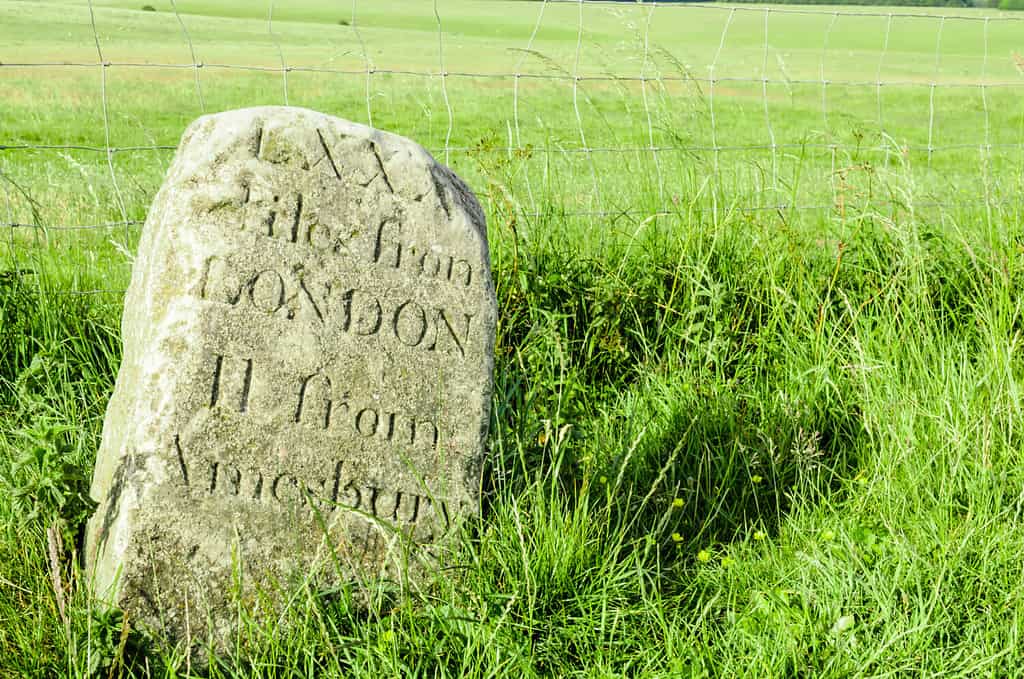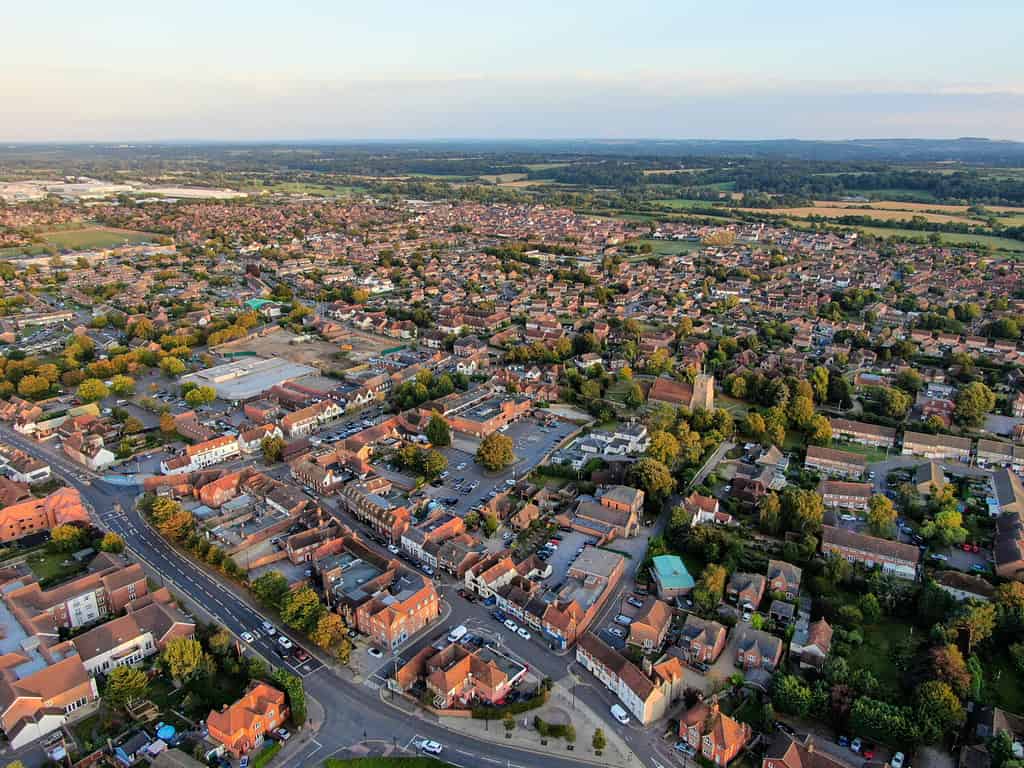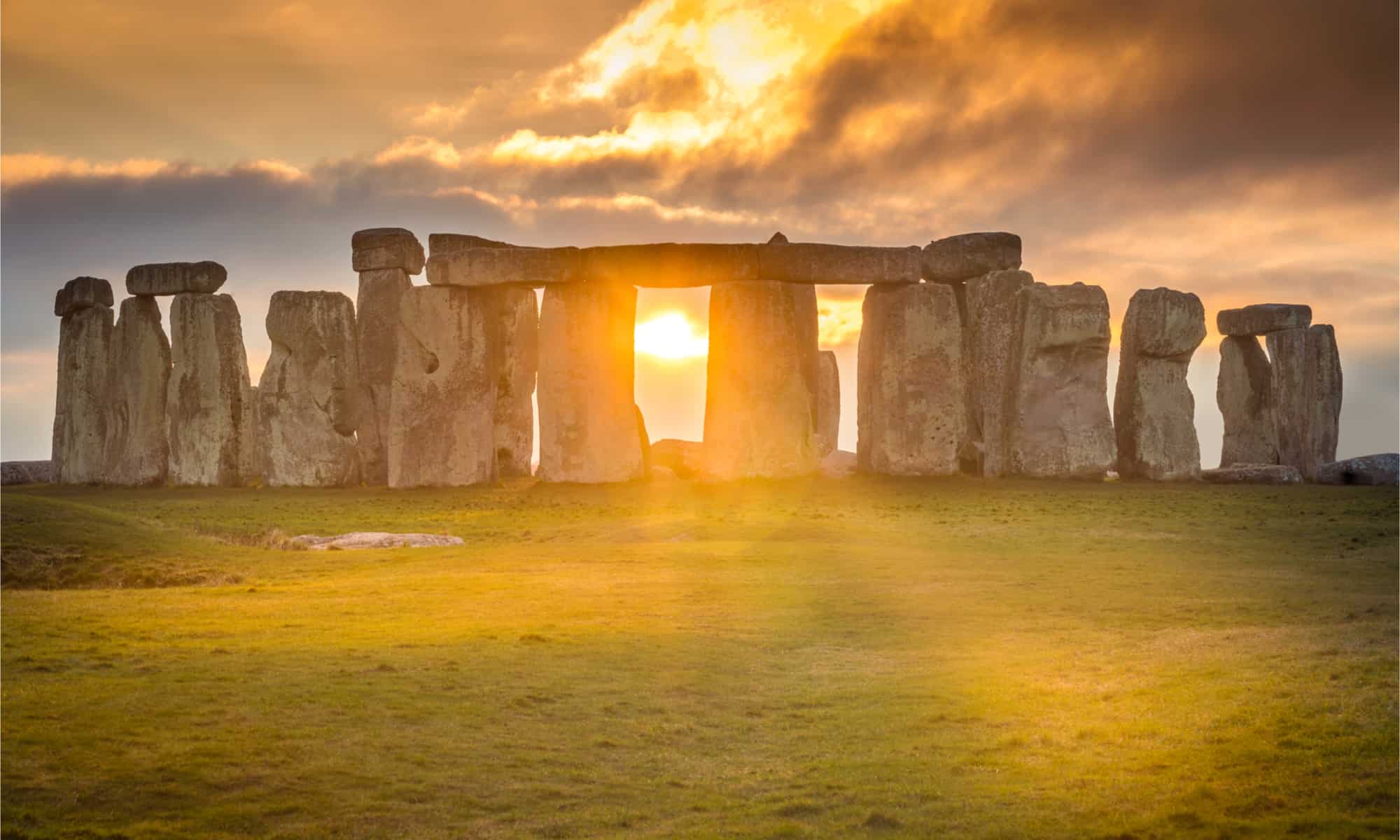Because England has such a long history, the dates that some cities were established cannot be identified with pinpoint accuracy. However, locations that were desirable in ancient times remain desirable today because they’re either near water or are easy to defend. As a result, many old cities remain. We’ll discover the top six oldest cities in England now.
The Top 6 Oldest Cities in England
In England, cities are defined by the type of buildings and commerce that take place in a specific settlement. In contrast, the United States defines cities based on the number of people that live in the immediate area. Since the naming of population centers and the number of inhabitants of settlements has fluctuated dramatically over the years, the term “city” is used in this article to loosely define any extant settlement with an ancient history.

1. Amesbury: Oldest City in England From the Neolithic Revolution
Amesbury is often referred to as the oldest city in England. This is because it is likely the first permanent settlement established at the beginning of the Neolithic Revolution. The Neolithic Revolution is the period in time when humans switched from migratory hunting and gathering to permanent agricultural settlements.
This town is near Stonehenge, and there is evidence that the Amesbury area may have been inhabited for at least 10,000 years. Amesbury is located on the River Avon, which historically facilitated trade. Today, this river is only used recreationally.
Arthurian legend has a claim to Amesbury. After King Arthur died, Guinevere may have retired to the abbey in town. Some believe she may have been buried in the area as well.

Amesbury area may have been inhabited for at least 10,000 years.
©Stephen Barnes/Shutterstock.com
2. Abingdon: Oldest Continuously Inhabited City in England
Located in Oxfordshire, Abingdon-on-Thames claims that it is the oldest continually populated town in Britain. It’s a neighborhood attached to Northampton, and it’s about 1.5 hours northwest of London.
Artifacts dating back to the Paleolithic period are scattered around town, and beneath the center of the town are the remnants of an oppidum. An oppidum is a Celtic Iron Age settlement.
It was a known Roman settlement that wasn’t abandoned with the fall of the empire. The Saxons turned it into an important center of trade during the Middle Ages.

Located in Oxfordshire, Abingdon-on-Thames claims that it is the oldest continually populated town in Britain.
©Martin Fowler/Shutterstock.com
3. Colchester: Oldest Recorded Settlement in England
Colchester in Essex, England, considers itself the oldest recorded settlement in England. It also served as England’s first capital. There may have been a settlement sometime between 400 and 500 BCE, and the first century CE played host to the Romans.
When Pliny the Elder mentioned Colchester in Natural History, he called it Camulodunum. It also contains the only extant Roman track for chariot racing in the United Kingdom.
In 1806, Jane Taylor composed the nursery rhyme Twinkle, Twinkle, Little Star in the Dutch Quarter. The Colchester Castle Museum is a must-see if you’re looking for a tour that covers local history spanning 2,000 years.
Colchester did not officially become a city until the Platinum Jubilee of Queen Elizabeth II. This Jubilee honored the queen’s 70th year on the throne, and in honor of this moment, Queen Elizabeth II upgraded eight towns into official English cities.

The Colchester Castle Museum features local history spanning 2,000 years.
©veesaw/Shutterstock.com
4. Ipswich: Oldest Continuously Inhabited Anglo-Saxon City in England
Ipswich has an ancient history dating back to the Paleolithic period, and it also claims to be the oldest continually inhabited Anglo-Saxon settlement in England. By the Middle Ages, the population was solely using the Old English language.
The name Ipswich derives from the Old English word “Gippeswic.” It’s believed the town existed in the 600s CE, though the Romans took up residence before abandoning it after the empire collapsed.
It was a well-known trading center by the 8th century CE, and the roads from this era still form the layout of the town. Since the extant layout finds its roots in a purely Anglo-Saxon population, the city claims this as its earliest continuously definitive culture.
In 1200 CE, King John granted Ipswich its Royal Charter. During the medieval period, a Royal Charter was needed to do business within the settlement. The famous Cardinal Wolsey was born in Ipswich around 1475.

Ipswich was a well-known trading center by the 8th century CE.
©Rob Atherton/Shutterstock.com
5. Thatcham: Oldest City in the British Isles
A Mesolithic settlement probably existed in present-day Thatcham around 13,000 years ago. This assumption comes from the fact that around 20,000 artifacts were found around the town.
The oldest Iron Age workshop exists in Thatcham. Later, it was home to the Romans and the Saxons. Thatcham is recorded in the Domesday Book which is a written census from around 1086 CE.
Francis Baily, an Astronomer Royal, is buried in St. Mary’s churchyard. The Astronomer Royal serves the royal family, and Francis Baily is famous for discovering Baily’s beads. However, a previous Astronomer Royal by the name of Sir Edmond Halley discovered the phenomenon over 100 years before Baily.
Since the surface of the moon is so rugged and variable, right after a total solar eclipse, little beads of light peak through before a full arc of light returns. These little beads of light are Baily’s beads.

Thatcham is recorded in the Domesday Book, which is a written census from around 1086 CE.
©Just Jus/Shutterstock.com
6. Lowestoft: The Oldest Abandoned and Re-Inhabited City in England
Lowestoft in England is the most easterly settlement in the United Kingdom. Within its confines, the oldest evidence of humans in Britain originates from the Pakefield Cliffs in a suburb of Lowestoft.
While regular inhabitants weren’t established in the area until 10,000 BCE, there is evidence of human habitation dating back around 700,000 years. Flint tools were found south of today’s town.
The region also played host to the Vikings, Saxons, Romans, and people from the Iron Age. The Domesday Book has a record of Lowestoft.
Lowestoft experienced heavy bombing during World War II since it was an important Navy base and industrial center. This made it a major target of the Luftwaffe. While it didn’t experience the heaviest night of bombing out of any city in England, more bombs went off in the city per citizen than anywhere else in the country.

There is evidence of human habitation in Lowestoft dating back around 700,000 years.
©Jevanto Productions/Shutterstock.com
Summary of the Top 6 Oldest Cities in England
Here’s a recap of the six oldest cities in England that we took a look at.
| Number | City | Category | Area’s History |
|---|---|---|---|
| 1 | Amesbury | Oldest city in England from the Neolithic Revolution | Evidence the area may have been inhabited for at least 10,000 years |
| 2 | Abingdon | Oldest continually inhabited city in England | Artifacts date back to the Paleolithic period |
| 3 | Colchester | Oldest recorded settlement in England | May have been a settlement between 400 and 500 BCE |
| 4 | Ipswich | Oldest continually inhabited Anglo-Saxon city in England | History dates back to the Paleolithic period |
| 5 | Thatcham | Oldest city in the British Isles | Mesolithic settlement probably existed about 13,000 years ago |
| 6 | Lowestoft | Oldest abandoned and re-Inhabited City | Evidence of human habitation dating back around 700,000 year |
Thank you for reading! Have some feedback for us? Contact the AZ Animals editorial team.








